Oscillatoria brevis reduces P. vannamei survival
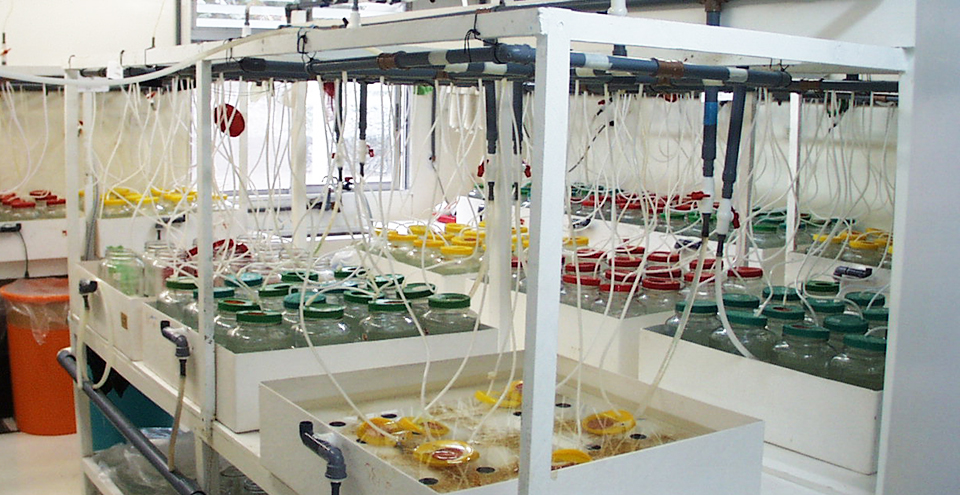
Toxicity describes the negative impact of various secondary metabolites (alkaloids, peptides, organophosphates, esters, etc.) on organisms, including human beings. Occasionally, toxic cyanobacteria cause disease and death in wild and cultured animals, including cultured shrimp.
Cyanobacteria and shrimp
Cyanobacteria are very small and generally unicellular, although they often form large colonies. These aquatic, photosynthetic organisms represent one of the largest and most important bacteria groups. Although cyanobacteria are quite common in shrimp ponds, few reports describe their suspected toxic effects.
For example, in Texas, USA, the presence of high quantities of Spirulina subsalsa in the stomach contents of Penaeus stylirostris in raceways caused necrosis of the stomach epithelium and associated mortalities. Blooms of Oscillatoria corokiana in the presence of Spirulina sp., Lyngbya sp. and Nodularia sp. coincided with mortalities of P. monodon in Australian production ponds. Water-soluble cyanotoxins produced in sublethal concentrations probably caused the weakening of the shrimp, rendering the animals susceptible to secondary bacterial infections.
A recent study in Mexico reported that Schizothrix calcicola caused severe damage to the gastrointestinal linings of P. vannamei and interfered with food ingestion. The result was slower growth, although no lethal effects were observed.
Cyanotoxins
Classified into two groups, cyanotoxins are toxins specific to cyanobacteria. One group includes those that cause acute lethal poisoning in vertebrates, such as the neurotoxins and hepatotoxins. The other is made up of molecules that are not highly lethal but exhibit selective biochemical antagonist activity.
Most cyanotoxins can probably be considered secondary metabolites derived from the production of pigments. They accumulate in the cytoplasm under specific conditions.
The factors that contribute to the production of toxins by cyanobacteria are not known. However, there is some evidence that toxin production increases during the exponential growth phase of the cyanobacteria or under growth conditions with optimum temperature, pH, and light. Toxic events have been associated with several cyanobacteria genera, including Anabaena, Aphanizomenon, Microcystis, Nostoc, Oscillatoria, Schizothrix, Spirulina and Trichodesmium.
Toxicity testing
The authors recently tested the toxicity of five cyanobacteria to P. vannamei larvae. The species tested were isolated from low-salinity shrimp ponds located in Ecuador’s Gulf of Guayaquil. They included Oscillatoria angustissima, O. brevis, O. subtilissima, a mixed culture of Anabaena circinalis and Anabaenopsis circularis, and a straight Anabaena filament that was not identified up to the species level. The algae were maintained at room temperature (24 to 28 degrees-C) in BG-11 culture medium with salinity of 5 grams per liter, continuous 1,500-lux light and aeration.
The toxicity test consisted of exposing 0.22- to 0.36-gram P. vannamei larvae to each isolated cyanobacteria in a toxicity room equipped with raceways filled with water and 20 2-liter bottles. Previous to the test, the shrimp larvae were transferred to the toxicity room, acclimated at a salinity of 5 grams per liter in a 250-liter tank, and observed during five days to insure mortality was under 5 percent.
Cyanobacteria concentration
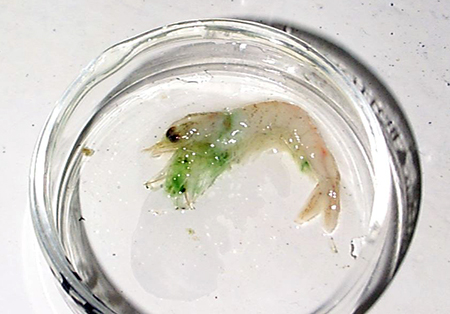
For each cyanobacterium isolated, shrimp larvae were exposed during 15 days to three filament concentrations (100, 1,000 and 10,000 filaments per milliliter at the beginning of the test) and a control without algae. Each treatment had four replicates, and the controls had two replicates.
The filament concentrations at the beginning of the test were estimated through counting using a Sedgewick-Rafter cell and light microscope. Based on these estimates, dilution of the algal culture with sterile culture medium was performed to insure the correct concentrations. The experiment was a block design with 1 alga per raceway, with the various treatments assigned randomly within each raceway.
Larval care
Shrimp larvae were weighted in groups of 10 and added to 1.5 liters of culture medium with the correct concentration of cyanobacteria. They were fed once per day with a commercial 40 percent protein feed at 2 percent of their biomass. Every two days, feces and unconsumed feed were siphoned from the bottles.
All bottles received continuous aeration through a submerged air stone, and water temperature was maintained at 28 ± 1 degrees-C. Dead larvae were removed daily and observed with a stereoscope for possible adherence of algae. At the end of the 15-day trial, survival, and average weight were estimated.
Results
The presence of O. brevis significantly reduced shrimp larvae survival (Table 1). The lowest survivals were encountered in the 1,000 and 10,000 filaments per milliliter treatments. When reviewing dead shrimp, filaments of O. brevis were found in the animals’ digestive tracts, clogging the gills and adhering to rostrums and mouth appendices.
Massaut, Percentage survival (average of four replicates ± standard deviation) of P. vannamei larvae, Table 1
| Species | 100 fil./ml | Survival (%) 1,000 fil./ml | 10,000 fil./ml | Control |
|---|---|---|---|---|
| O. angustissima | 43a ± 15 | 75a ± 19 | 63a ± 22 | 70a |
| O. brevis | 43b ± 12 | 5a ± 10 | 0a | 87a ± 12 |
| O. subtilissima | 73a ± 6 | 53a ± 29 | 63a ± 15 | 95a ± 7 |
| A. circinalis, A. circularis | 75a ± 17 | 65a ± 13 | 90a ± 10 | 80a |
| Anabaena sp. | 80a ± 22 | 80a ± 20 | 83a ± 15 | 90a ± 14 |
The authors believe the presence of O. brevis interfered with food ingestion and results in shrimp becoming weaker. Various other studies have demonstrated a similar effect for zooplankton, where the size and shape of cyanobacteria filaments strongly interfere with water filtration, reducing the zooplankton’s ability to capture prey. In addition to the mechanical interference, the presence of filaments in the digestive tract could cause damage that would increase the risk of bacterial infections.
There was no significant effect of the exposure to the other cyanobacteria, for which average larvae survival oscillated 43 to 90 percent compared to the controls (Table 1). Exposure to O. angustissima even resulted in a higher weight gain at the end of the trial (P = 0.0337, Kruskal-Wallis test for nonparametric data).
(Editor’s Note: This article was originally published in the December 2003 print edition of the Global Aquaculture Advocate.)
Now that you've reached the end of the article ...
… please consider supporting GSA’s mission to advance responsible seafood practices through education, advocacy and third-party assurances. The Advocate aims to document the evolution of responsible seafood practices and share the expansive knowledge of our vast network of contributors.
By becoming a Global Seafood Alliance member, you’re ensuring that all of the pre-competitive work we do through member benefits, resources and events can continue. Individual membership costs just $50 a year.
Not a GSA member? Join us.
Authors
-
Laurence Massaut, Ph.D.
Fundación CENAIM-ESPOL
P.O. Box 09-01-4519
Guayaquil, Ecuador[99,101,46,117,100,101,46,108,111,112,115,101,64,116,117,97,115,115,97,109,108]
-
Jacqueline Ortiz
School of Biology
Faculty of Natural Sciences
University of Guayaquil, Ecuador
Tagged With
Related Posts

Health & Welfare
Ammonia toxicity degrades animal health, growth
Ammonia nitrogen occurs in aquaculture systems as a waste product of protein metabolism by aquatic animals and degradation of organic matter, or in nitrogen fertilizers. Exposure can reduce growth and increase susceptibility to diseases in aquatic species.
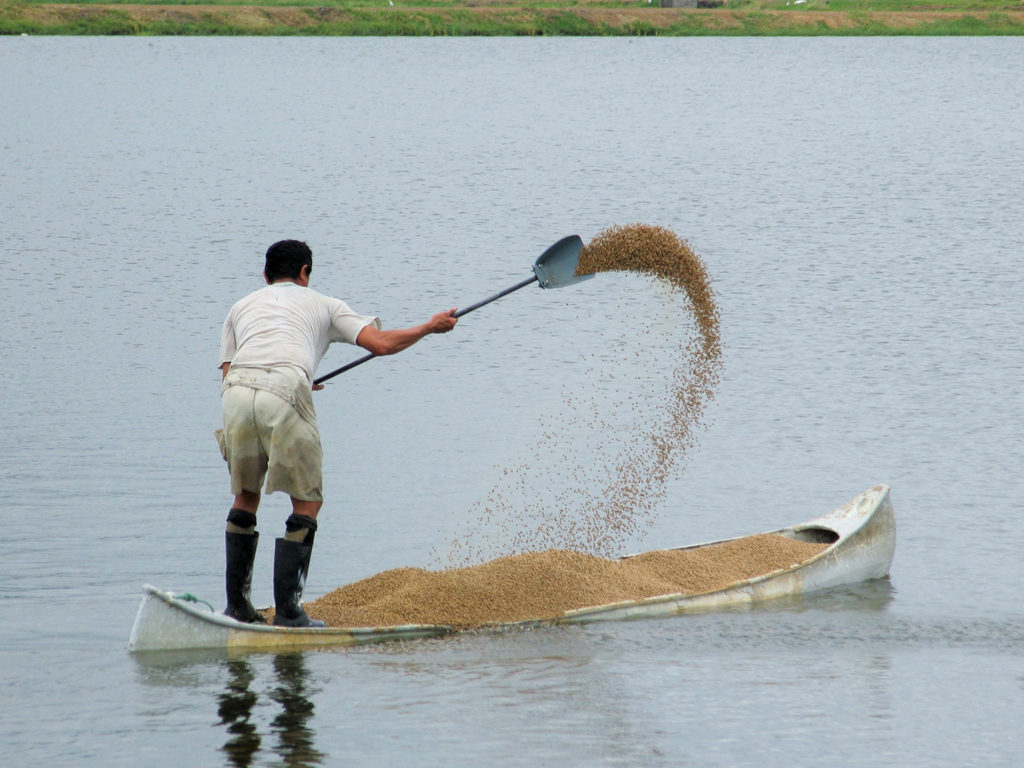
Responsibility
Ammonia nitrogen dynamics in aquaculture
The major sources of ammonia in aquaculture ponds are fertilizers and feeds, and problems with high ammonia are most common in feed-based aquaculture.
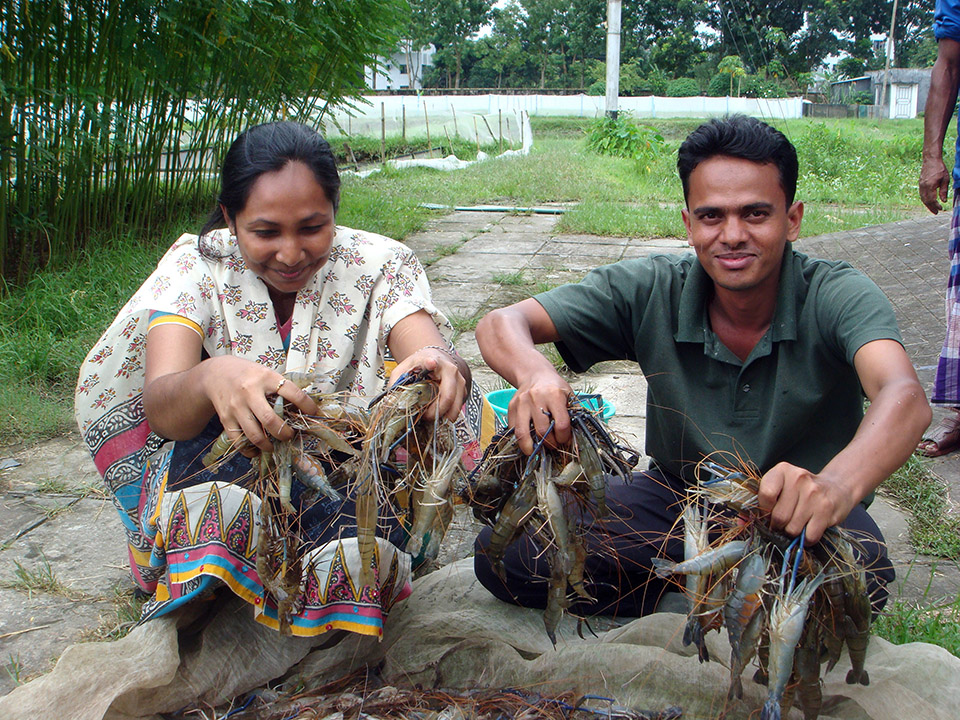
Responsibility
C:N-controlled, periphyton system boosts production in stagnant ponds
The adoption of polyculture systems with controlled carbon:nitrogen ratios and substrates for periphyton development can improve utilization of the aquatic food webs in stagnant ponds.
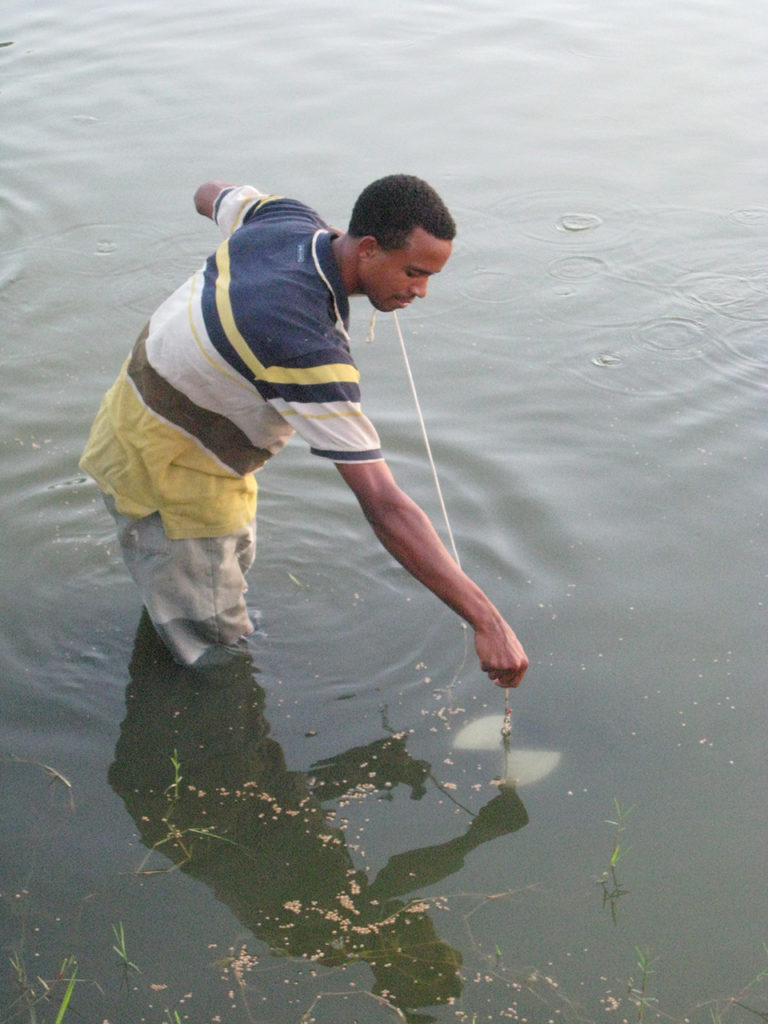
Responsibility
Thoughts on pond fertilization
Prof. Boyd provides additional insights into fertilization of aquaculture ponds, discussing phytoplankton requirements, organic and inorganic fertilizers, and other relevant aspects of pond management.


